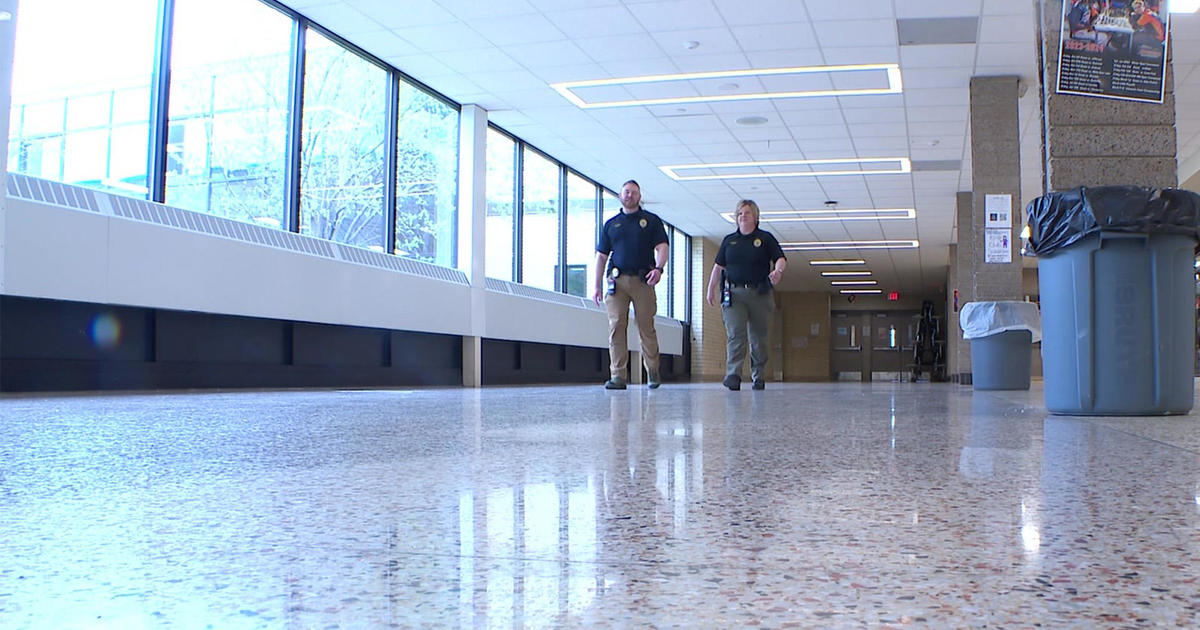Tracking Falcons' Comeback Along The Mississippi
WINONA, Minn. (AP) — Jackie Fallon is a falcon fan.
The vice president of field operations for the Midwest Peregrine Society was up before sunrise last week to make a trip along U.S. Hwy. 61 and check on several peregrine falcon nesting sites along the Mississippi River.
Along for the ride was Jesse, a peregrine falcon Fallon uses during speeches and presentations. Fallon said the 1-year-old juvenile, rescued from a Winona-area nest after suffering injuries to his right foot, planned to make his debut in front of some Saint Mary's University students later that afternoon. Jesse was excited and eager to please, puffing out his feathers as he perched on Fallon's hand, the Winona Daily News reported.
One of her several stops took her to John A. Latsch State Park along the highway and to falcon nests on three cliffs named Faith, Hope and Charity.
She scouted the nesting sites for signs of eggs and incubation. Depending on how cooperative the falcons were, each of her stops could take anywhere from 10 minutes to several hours to survey the site with her telescope.
Cold weather typically doesn't affect nesting habits, but this year the nest at Faith was a little behind schedule.
"Typically falcons are incubating their eggs by now, but they haven't," Fallon said. "They are laying, however."
Later this spring and summer, Fallon and volunteers will return to scale the cliffs and attach color-coded tracking bands on the young that survive.
Falcons nest all along the Mississippi River, with dozens of pairs along cliffs and bluffs. The birds also do well in cities, using tall buildings, smokestacks and bridges for nesting sites.
They didn't always do so well.
Similar to what happened to bald eagles, human encroachment and exposure to chemicals such as the insecticide DDT devastated the U.S. peregrine falcon population, and by the 1960s, the Minnesota DNR reported the bird had nearly vanished.
The Midwest Peregrine Society was formed in 1970 to try and bring the falcons back. Several captive breeding and release efforts were attempted during the 1970s and 1980s, Fallon said, but in the Midwest they weren't very successful, as predators like owls attacked and killed them.
Fallon said falcons successfully returned to Minnesota in the early 2000s, most recently to Whitewater State Park several years ago. Today, she said, peregrine falcons have more than just recovered.
"Historically there have only been around 40 nesting pairs of falcons in the Midwest," Fallon said. "Our original goal was to get 15 to 20. We have 300."
In the United States, the bird was removed from the federal endangered species list in 1999. In Minnesota, the species has been listed as threatened since 1996, but Fallon predicts the bird will be delisted within a year.
Now, the society monitors the bird population and studies nesting habits to ensure the falcon's survival.
"The story of peregrine falcons is a nice success story," Fallon said. "We went from zero to recovered in 15 years. It's such a big comeback."
(© Copyright 2013 The Associated Press. All Rights Reserved. This material may not be published, broadcast, rewritten or redistributed.)



